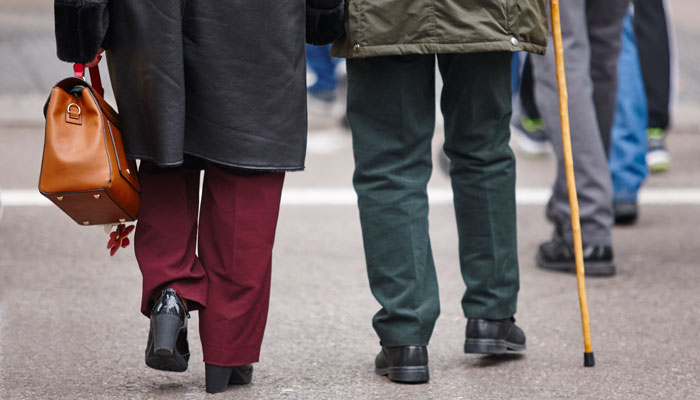Lack of transparency into the quality of aged care providers is hampering reforms meant to keep older Australians in their homes and out of residential aged care facilities.

What next? Keeping older Australians out of residential aged care is the more financially sustainable option.
And with more than 126,000 people with complex needs on the waiting list for homecare packages, there is anecdotal evidence that people are ending up in residential care early because of the delay in accessing the federally funded packages.
In an evaluation of the impact of home care reforms introduced in February 2017, Macquarie academic Dr Mikaela Jorgensen concluded that Australians who reach the top of the waiting list for home care packages are confronted with an absence of publicly available sources that allow them to compare providers’ quality.
“People don’t understand what they have to do next, particularly if they don’t have that support of family and friends, or education or digital literacy, or they are from a non-English-speaking background,” says Jorgensen, a Research Fellow at the Centre for Health Systems and Safety Research at Macquarie’s Australian Institute of Health Innovation.
Pitfalls of consumer-directed home care
The 2017 reforms shifted home care further towards a consumer-directed model where the individual decides which provider to allocate their funding to. Previously, the packages were allocated to the providers themselves, and in many cases government aged care assessment teams would help individuals find available services in their area.
People don’t understand what they have to do next, particularly if they don’t have that support of family and friends.
The new model is part of wider reforms which are in line with the wishes of most older Australians to stay in their own homes and communities, as well as with the federal government’s focus on financially sustainable aged care for an ageing population, as the cost of formal care at home is cheaper than residential care.
However, in her policy brief looking at whether the home care reforms have improved access, quality of care and outcomes for older Australians, Jorgensen identified issues with both the size of the waiting list and the lack of access to information about care providers once people reached the top of the list.
On top of that, while the government had commissioned a number of evaluations of the consumer-directed reforms and the My Aged Care gateway, they had primarily been small, qualitative studies with few people from diverse and Aboriginal and Torres Strait Islander backgrounds included, making it difficult to know whether the reforms had improved access or not.
- World-first fish oil + testosterone Alzheimer's trial begins
- Why your grumpy grandpa could need help
- Retirement village contracts are "cunningly disguised" insurance deals
“For some people who have the support, literacy and education, it’s been a great move and they have more control and choice; but there is a potential for inequality to start to show, because people who are unable to make informed and supported choices can be more likely to fall through the cracks,” says Jorgensen, who developed the brief as part of ascholarship at the Deeble Institute for Health Policy Research.
“What’s also really important is that there’s been no evaluation of what’s happening to people on the waiting list, the impact on informal carers and whether people are entering into residential aged care early.
“We’ve had anecdotal reports of it, but there’s been little work by the government around costing whether it would be better to increase the supply of home care packages rather than having people enter into residential care early.”
A recent study of more than 1000 home care clients lead by Jorgensen found that greater volume of home care services significantly delays admission to residential aged care: “Our research shows that it is important that older Australians access the amount of care and support that they need.”
Royal Commission to investigate quality of home care
Jorgensen says her findings that there is no, or very minimal, public information about home care providers feeds directly into the issues around quality that will be investigated by the Royal Commission into Aged Care Quality and Safety, which will cover in-home as well as residential services, and begins with a preliminary hearing in Adelaide tomorrow.
There’s been no evaluation of what’s happening to people on the waiting list, the impact on informal carers and whether people are entering into residential aged care early.
About 92,000 Australians have secured home care packages and since the 2017 reforms, the number of home care providers has jumped more than 53 per cent, from 527 to 896, many of them sole traders who will undergo review by the Aged Care Quality Agency every three years. Complaints about the packages have also increased since the reforms were introduced, from 688 in 2016-2017 to 1014 in 2017-2018.
Jorgensen points out that transparency, a major issue highlighted in last September’s Four Corners report into residential aged care, is even more lacking in the home care sector, with accreditation reports of home care providers not made public, unlike those of residential care facilities.
“I don’t know why, and it’s the same for the aged care complaints; there are aggregated figures provided across the sector on the number and nature of complaints, but that information is not linked to any certain provider, so again that transparency about quality information is absent.”
And that absence works two ways: just as information about poor quality care is not easily available, neither is information about good quality care, which becomes an issue when negative attention on residential facilities – which are home to 230,000 Australians - has a real impact on people not wanting to live in them, Jorgensen says.
“We do know from other research that some people are better socially supported in residential care if they were very isolated in their own home, so some of the negative press could probably use with some balance to look at positive things that are happening - but that information is very hard to find.”
Mikaela Jorgensen is Research Fellow at the Australian Insitute of Health Innovation



